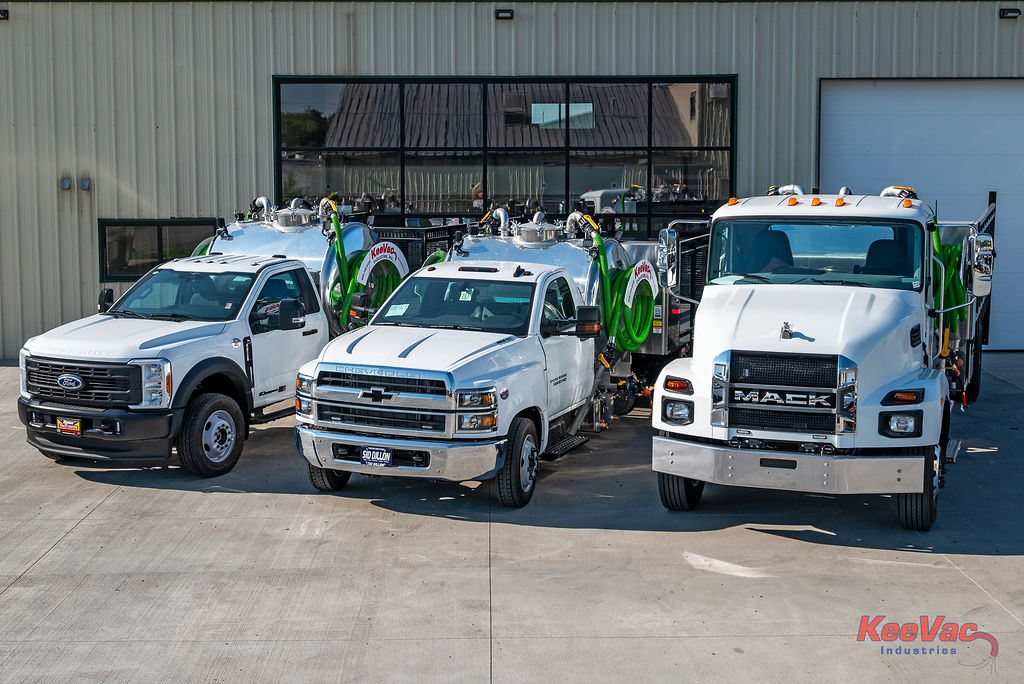Maximizing ROI: How Preventative Maintenance Transforms Your Vacuum Truck Fleet
For businesses that rely on vacuum trucks, ensuring these critical assets are always operating efficiently is essential to maximizing return on investment (ROI). Preventative maintenance is the cornerstone of extending equipment lifespan, minimizing downtime, and avoiding costly repairs. By following a well-planned maintenance strategy, vacuum truck operators can achieve superior performance and significant cost savings.
The Importance of Preventative Maintenance
Vacuum trucks play a vital role in waste management, environmental cleanup, and industrial services. These high-performance machines are complex, with various systems that must function seamlessly. Without consistent upkeep, you risk sudden failures that can halt operations and lead to expensive emergency repairs.
Key Benefits of Preventative Maintenance:
- Reduced Downtime: Regular maintenance helps detect and address small issues before they escalate into major problems.
- Extended Equipment Lifespan: Proper care and timely part replacements can extend the longevity of your vacuum truck fleet.
- Improved Safety: Malfunctioning equipment can create hazardous conditions. Maintenance ensures operators can perform their duties safely.
- Enhanced Performance: Keeping components clean and lubricated ensures your vacuum trucks operate at peak efficiency.
- Better Resale Value: A well-maintained fleet commands higher resale prices when it’s time to upgrade equipment.
Best Practices for Scheduling and Execution
Developing a comprehensive preventative maintenance program requires a strategic approach. Implementing these best practices can help streamline the process:
- Create a Maintenance Schedule
Establishing a regular maintenance schedule ensures that essential tasks are never overlooked. Develop a calendar that outlines service intervals for each vacuum truck in your fleet. Recommended maintenance intervals can vary based on mileage, operating hours, and manufacturer guidelines.
- Prioritize Inspections
Regular inspections help identify minor issues before they become costly repairs. Ensure operators are trained to conduct visual checks before and after each use. Encourage them to report fluid leaks, worn hoses, or any other visible concerns.
- Follow Manufacturer Guidelines
Refer to the manufacturer’s maintenance manual for each vacuum truck. Adhering to recommended service intervals and parts specifications can prevent unnecessary wear and tear.
- Maintain Detailed Records
Tracking maintenance history provides valuable insights into your fleet’s performance. Use digital fleet management tools to log service dates, repairs, and part replacements.
- Train Operators
Operators are the first line of defense against mechanical failures. Provide ongoing training to help drivers identify warning signs, perform basic maintenance tasks, and ensure proper truck operation.
Common Maintenance Pitfalls and Solutions
Even with the best intentions, maintenance programs can fall short due to common pitfalls. Identifying and addressing these issues can significantly improve results:
Pitfall 1: Ignoring Early Warning Signs
Solution: Train operators to identify performance issues such as sluggish suction, overheating, or unusual noises. Acting on these signs can prevent costly breakdowns.
Pitfall 2: Inconsistent Maintenance Scheduling
Solution: Use automated reminders to ensure timely maintenance intervals. Fleet management software can simplify scheduling.
Pitfall 3: Failing to Stock Essential Parts
Solution: Keep commonly needed parts like filters, gaskets, and lubricants on hand to minimize downtime.
Pitfall 4: Neglecting Fluid Levels and Filtration Systems
Solution: Regularly inspect and replace engine oil, hydraulic fluids, and coolant as specified by the manufacturer.
Measuring ROI from Maintenance Investments
Investing in vacuum truck maintenance can seem like a significant upfront cost, but the long-term benefits far outweigh the expense. By measuring your ROI, you can clearly see the positive impact on your bottom line.
Key Metrics to Track:
- Downtime Reduction: Calculate how much operational time you’ve saved through scheduled maintenance.
- Repair Cost Savings: Compare the costs of emergency repairs to your preventative maintenance investments.
- Fuel Efficiency: Well-maintained trucks often operate more efficiently, reducing fuel expenses.
- Resale Value: Track how maintenance affects the resale prices of your vacuum trucks.
Tips from Industry Experts
Fleet managers who excel at vacuum truck maintenance often emphasize the following tips:
- Document Everything: Maintain detailed service records for each truck to monitor trends and predict potential failures.
- Incorporate Driver Feedback: Operators provide valuable insights into truck performance, so involve them in your maintenance strategy.
- Standardize Procedures: Establish clear maintenance checklists to ensure consistency across your team.
Tools and Technologies for Fleet Management
Implementing technology can improve the accuracy and efficiency of your maintenance program. These tools can help streamline processes and improve ROI:
- Fleet Management Software: Platforms like Fleetio, Verizon Connect, and Samsara offer automated maintenance tracking, scheduling, and record-keeping.
- Telematics Systems: Real-time vehicle monitoring tools help identify performance issues early and reduce downtime.
- Digital Checklists: Mobile apps enable operators to conduct standardized inspections and submit reports directly from the field.
Protect Your Investment with Reliable Maintenance
Investing in preventative vacuum truck maintenance is the key to maximizing ROI and keeping your fleet operating at peak performance. By developing a consistent maintenance schedule, avoiding common pitfalls, and leveraging modern fleet management tools, you can reduce costly downtime and extend the lifespan of your equipment.
At KeeVac Industries, we understand the importance of reliable vacuum truck performance. Whether you need a new septic pump truck, vacuum tank, or slide-in pumper unit, our Denver-based team is committed to delivering high-quality builds that meet your specific needs. Contact us today to discuss our wide selection of vacuum trucks and find the right solution for your business.

